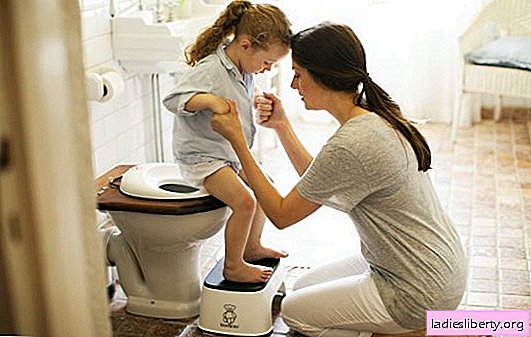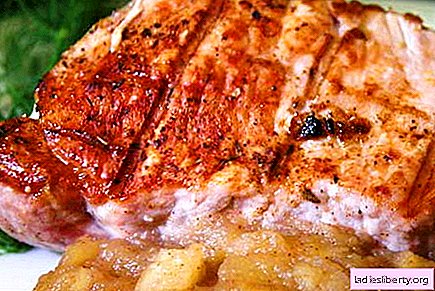
Itching of the skin or of various parts of the body is a special physiological condition that causes an irresistible desire to rub or scratch the irritated area.
It occurs mainly in children, because it is a clinical manifestation of many diseases. In some cases, accompanied by a change in the skin or rash.
Itchy Child: A Clinical Definition of the Problem
Child's body itching is defined as specific reaction of the skin to internal disturbances in the body or external stimuli. The mechanism of development of this reaction is based on signals that emanate from the nerve endings located in the epidermis.
Under the influence of external factors, nerve receptors are irritated and give a signal to the brain. Here a reverse signal is formed, which causes (at the level of the reflex) an unconscious desire to scratch the irritated area. When exposed to internal stimuli, a special substance is activated and released into the blood - histamine, which is considered an itch mediator.
Skin itching of the body in a child refers to physiological conditions that do not pose a danger to life, however, cause discomfort, cause suffering, disturb sleep. Depending on the reasons, it may be permanent or paroxysmal, aggravated in the evening and at night.
An itchy child may have:
• local character, that is, cover small localized areas of the skin;
• generalized, and cover the skin of the whole body.
Itchy baby: possible causes
Itching is the most frequent malaise among children. The causes of this phenomenon are quite numerous, conditionally they can be divided into several categories:
• caused by exposure to external factors;
• due to internal diseases and pathological disorders;
• resulting from the failure of basic hygiene rules.
Possible causes of itchiness in a child
The most common reasons for seeking treatment are as follows.
Allergic reactions
The leading place is occupied by violations of the allergic nature. These include atopic and allergic dermatitis, urticaria. In addition to the skin itchiness of the body in a child, they are accompanied by edema, hyperemia of the skin, peeling and rashes on the skin. The causes of these manifestations may be allergies to food, detergents (washing powder, soap), household dust, animal hair, pollen, synthetic clothing, diapers, as well as cosmetic products for the care of children's skin. The cause of this condition can also be insect bites.
Mental or neurological causes
In the process of growth and development, a child may experience psychosis, neurosis, and neurosis-like states that provoke the occurrence of certain diseases. Among them, atopic dermatitis is often diagnosed. When these pathological disorders of the skin remain clean, pathological changes, including the characteristic swelling and hyperemia is not observed, however, itching is obsessive, and in a stressful state, it only increases. This encourages the child to constantly comb the skin until abrasions and even blood.
Infectious diseases
Children's infectious diseases: measles, chicken pox are accompanied by characteristic rashes and intolerable itching of the body in a child. This is due to the spread of the virus in the body, which irritates the nerve receptors located on the surface of the epidermis. Itching is a constant painful nature, provokes the desire to scratch and increases the suffering of the baby. However, experts do not recommend combing the rash, because it can cause small scars - Oppin, and in addition, it can increase the likelihood of a new infection.
Parasitic infections
Often the cause of itching are infections caused by parasites that settle on the skin of a child. They develop vigorous vital activity, they vigorously multiply, feeding on blood when biting through the surface layer of the skin. Such parasites are lice, fleas, bed bugs, scabies mites. The latter gnaws the passages under the skin, damaging the nerve endings. In this case, the child has an itch localized, and is manifested in the locations of the parasites.
Dyspeptic disorders
Disorders of digestion contribute to the secretion of digestive enzymes, along with feces. Getting on the skin in the anus, they begin to act, thereby irritating its surface, causing hyperemia, swelling and itching in a child. Periodically, especially after a bowel movement, it becomes intolerable, causes anxiety and suffering, disrupts sleep.
Mycoses
Itching body in a child can cause fungal lesions of the skin (dermatophytosis, scab, ringworm). Various types of fungi, falling on the skin, can affect the entire surface of the body, as well as its individual parts: the scalp, limbs, especially the skin of the feet. In addition to itching, the symptoms of the disease are: hyperemia of the skin, peeling or suppuration of the skin, hair loss.
Body itching in a child: diagnosis and treatment
Proper assessment of itching is a difficult task, because it requires a thorough examination of the child.
Its purpose is to identify the causes of this condition and differentiate with diseases of the kidneys, liver, blood, endocrine system, helminthiasis.
Diagnosis of itching in a child is conducted comprehensively and includes the following activities:
• visual inspection;
• detailed history;
• laboratory research;
• instrumental studies.
Therapeutic therapy involves strict adherence to the recommendations of the attending physician:
• child's personal hygiene;
• change in diet in the direction of the diet;
• exclusion of products that cause allergies;
• local treatment;
• drug treatment.
Experts will help to eliminate an unpleasant symptom: allergist, psychologist, neuropathologist, infectious disease specialist. If itching is not a manifestation of an infectious disease, then, as a rule, children are prescribed treatment. antihistamine, hormonal, sedatives, massage, in some cases, therapeutic sleep, acupuncture, magnetic therapy, UHF.
Itching in the anus of a child: diagnosis and treatment
In an child, itching in the anus is a painful phenomenon, which is accompanied by an unpleasant burning sensation and tingling, and causes an overwhelming desire to scratch an irritated area.
Experts identify:
• primary anal itching, which is an independent phenomenon that occurs with insufficient hygienic care;
• secondary anal itching, which is a symptom of a disease.
Practice shows that the causes of primary itching in the anus of a child include fungal infections, dermatitis, insufficient or excessive adherence to hygienic norms, uncomfortable clothing (warm or cramped), the use of rough toilet paper or hard washcloth.
Manifestations of secondary itching are: anal fissures, hemorrhoids, constipation, diarrhea, rectal inflammation, diabetes. A common cause of itching is enterobiosis, a parasitic lesion caused by pinworms or roundworms. Their habitat is considered to be the intestines, but they lay eggs in the folds of the anus, which causes itching in the child, especially at night.
To conduct a comprehensive diagnosis of itching in the anus in a child helps laboratory and instrumental studies.
• Laboratory analysis of urine and blood for general analysis, glucose content.
• Analysis of feces for planting in order to identify parasites, eggs, cysts, causes of diarrhea.
• Microscopy and skin scraping.
• External examination. Allows you to identify cracks, warts, hemorrhoids, and other pathologies.
• Rectal finger examination. Allows you to determine the functionality of the anal sphincter, violations of which often lead to the incontinence of fecal masses - the causes of itching.
• Anoscopy, less often - rectomanoscopy. Allows you to identify internal hemorrhoids, polyps, etc.
The main event in the complex therapy is assigned to tthorough anal hygiene.
The treatment of itching in the anus in a child depends on the cause and form of the disease, and during the initial anal itch it is recommended to apply:
• hormonal drugs;
• drying ointments;
• lotion with painkillers;
• wound healing agents;
• antifungal ointments and creams;
• candles against hemorrhoids;
• anti-worms.
The effective methods of treatment of itching in the anus of a child include the means of traditional medicine, which consist of natural ingredients. This herbal decoctions, infusions, which are used as lotions, compresses, and also drink.
Temperature and itching in a child: diagnosis and treatment
Many diseases in children, in addition to itching, are characterized by other symptoms, such as fever and rash. Moreover, they can be signs of serious diseases that pose a real threat to the health of the child’s body. Temperature and itching in a child, as well as fever, loss of appetite, and sore throat are signs of many infectious diseases.
Infectious erythema. The cause is parvovirus B19, which is transmitted by airborne droplets. Symptoms are rash, headache, cough, low fever and itching in the child.
Sudden rash (roseola). The causative agent is the herpes virus type 6. It affects children from 10 months to 2 years, transmitted by airborne droplets. Symptoms of the disease can be swollen eyelids, runny nose, redness of the throat, swollen lymph nodes, fever and itching in a child, which is accompanied by the appearance of rashes in the form of pink spots.
Chickenpox. A common infectious disease, the causative agent of which is considered varicella zoster. Symptoms resemble signs of ARVI, later complemented by headache, pain in the abdomen, characteristic rashes that accompany fever and itching in a child.
Infectious mononucleosis. The causative agent is Epstein-Barr virus, belonging to the group of herpes viruses. Characterized by an increase in lymph nodes, spleen and liver. Later, the symptoms are complemented by fever, plaque on the tonsils, a characteristic rash, which is often accompanied by itching.
Measles. A common disease caused by the measles virus, which proceeds in three stages. Characteristic signs are considered runny nose, dry cough, redness of the eyes. At the next stage, a rash appears, there is a fever and itching in the child. After the disease, a mild scaling remains at the site of the rash, which disappears after a week.
Rubella. Acute disease that easily develops in children, but causes severe consequences for the fetus in the womb of an infected woman. Like measles, it proceeds in three stages, but the symptoms are somewhat different from the signs of measles. The temperature remains low, but the lymph nodes increase. Light pink rash is accompanied by itching of the child.
Diagnosis involves a comprehensive study, and treatment depends on the nature of the disease, the cause of its occurrence, the severity and age of the child.
Rash without itching in a child: diagnosis and treatment
But not always children's pathologies are accompanied by fever. There are several categories of diseases, a symptom of which is a rash without itching in a child.
These include:
• infectious diseases;
• parasitic lesions;
• allergic reactions;
• diseases of the blood-forming organs and blood vessels;
• Poor hygiene for the child.
To determine the origin of the rash the doctor prescribes laboratory research:
• blood test for allergy tests
• KLA and blood biochemistry
• histological examination of samples of affected tissues.
As therapeutic measures prescribed antihistamine drugs, antibiotics, the use of hormonal and corticosteroid drugs.
To achieve a quick effect from the treatment, local treatment with folk remedies is recommended.











